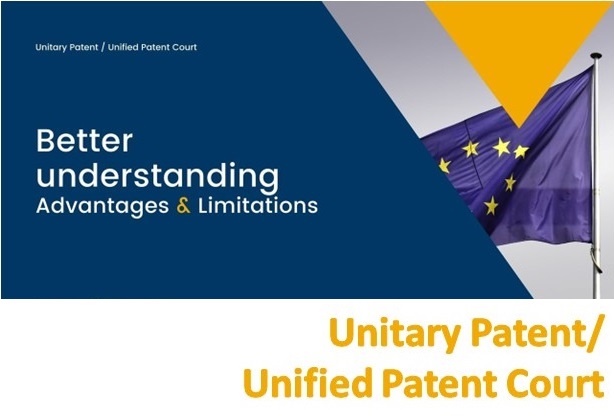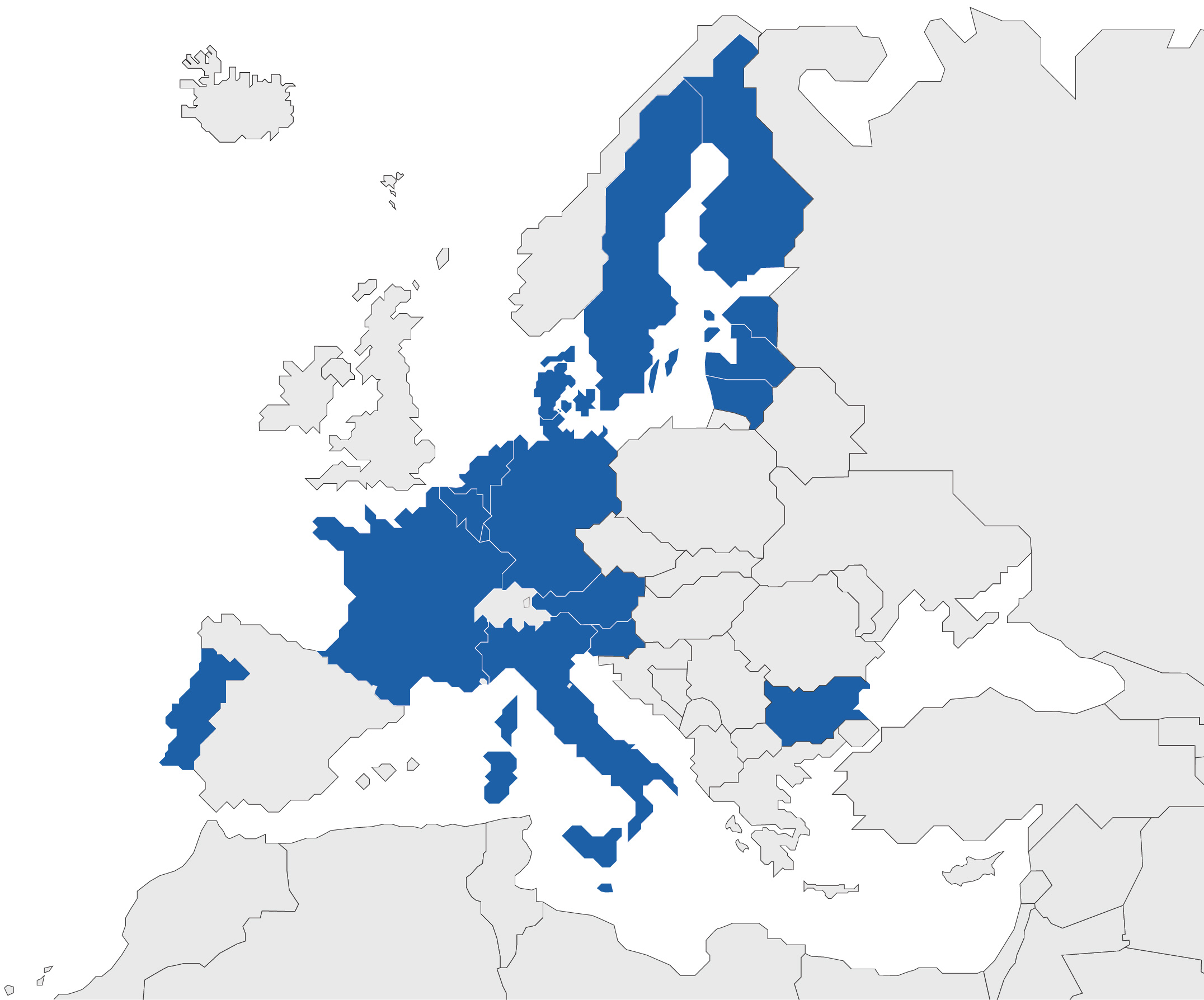From the summer of 2023, to obtain protection in the countries of the European Union (EU), a European Patent with unitary effect (“Unitary Patent” – UP) might be chosen.
On the same date, the Unified Patent Court (UPC) will become competent to deal with infringement and invalidation cases, including both of Unitary Patents (UP) and Classic European Patents (EP).
Laurent & Charras would like to share with you some key points, which will allow you to better understand what this implies and support you in taking decisions.
- Classic European patents (EP) vs Unitary patents (UP)
- Unified Patent Court (UPC)
* Understand the UPC and its main characteristics
* Structure of the UPC: Court, Court of Appeal… - Opt-out: Understanding the waiver procedure
- In practice: The choice to be made once the European Patent (EP) is granted
Classic European Patents (EP) and Unitary Patents (UP), overview.
Classic European patents (EP): The current situation
1. Central granting procedure at the EPO
2. National legal regime:
- National validations of the EP patent (translations, annuities, representation, registrations, etc.)
- Litigation before the respective national courts – several parallel disputes possible (FR, DE, GB…), legal uncertainty, no case law in common, high costs
Until now (28/11/2022), the 17 States participating in enhanced cooperation are: Germany, Austria, Belgium, Bulgaria, Denmark, Estonia, Finland, France, Italy, Latvia, Lithuania, Luxembourg, Malta, the Netherlands, Portugal, Slovenia and Sweden
Unitary Patents (UP): from June 2023
- Formalities: Centralized granting procedure with the EPO (no change at this point), but a single unitary protection register, which facilitates registration.
- Countries covered: The UP covers 17 member states of the European Union (EU) to date and 25 or even 27 member states in the future. Please note: till now, Spain and non-EU countries, such as the United Kingdom and Switzerland, are not covered.
The unitary effect is subject to request upon granting. - Translation of the Patent:
• Translation into English if the patent is in French or German,
• Translation into an official EU language if the patent is in English. - Fees: One annual fee to be applied to all participating Member States.
- Litigation: The UP is automatically and exclusively subject to the Unified Patent Court (UPC).
Unified Patent Court (UPC)
Understand the UPC and its main characteristics
Definition: International jurisdiction created by an agreement signed by 25 EU Member States (except Spain and Croatia) to hear cases of infringement and validity of unitary patents as well as Classic European patents.
Entry into force: The UPC Agreement will enter into force in June 2023.
Jurisdiction: The UPC is the sole competent court for all matters concerning EP patent applications or granted EP patents (unless Opt-Out).
Scope of UPC decisions:
- European patents with unitary effect (UP): all territories covered by this unitary effect,
- European patents without unitary effect (EP): territories of the participating States where the patent has its effects.
Transfer of sovereignty: the countries that ratify the UPC agreement transfer the power of their national jurisdiction to the UPC.
- Actions for infringement or risk of infringement counterclaims concerning licenses
- Actions for finding non-infringement
- Actions seeking interim and preservation measures and injunctions
- Nullity actions
- Counterclaims for nullity
- Actions regarding EPO decisions relating to the UP
- License of right
- Prior Personal Possession Exception
National courts remain competent for actions that do not fall within the exclusive jurisdiction of the UPC (contracts, patent rights, service inventions).
Structure of the UPC: Court, Court of Appeal...
Court of First Instance
- Central Division (Seat in Paris + Cection in Munich)
- 2 legal judges from different participating states + 1 technical judge.
- Language of the patent procedure.
- 12 local divisions (Mannheim, Düsseldorf, Brussels, Helsinki, Milan, etc.)
- 3 legal judges + possibly 1 technical judge, including 1 or 2 legal judges from the participating state.
- The official language(s) of the host state or an official language of the EPO designated by that state.
- Regional divisions (Stockholm for Sweden and the Baltics)
- 3 legal judges + possibly 1 technical judge, including 2 legal judges from the participating states concerned.
- The official language(s) of the participating states or an official EPO language designated by that state.
Court of Appeal (Luxembourg)
- 3 legal judges from different participating states + 2 technical judges assigned to the chamber by the chief of the Court of Appeal
- The language used before the Court of First Instance or, if the parties agree, would be the language of the patent prosecution proceedings, the Court may use another official language of a participating state
Registry (Luxembourg)
Arbitration and Mediation Center (Lisbon and Ljubljana)
- A patent cannot be revoked by this center, nor limited
Fixed costs :
- Infringement action: €11,000
- Nullity action: €20,000
- Application for provisional injunction: €11,000
The cost is variable depending on the amount of the subject matter: from €0 (value < €500k) to €325,000 (value > €50M)
Opt-out: Understanding the waiver procedure
Definition :
Transitional period: 7 years during which it is possible to choose between the UPC and the national courts. Holders of European patents (with national effects) therefore have the possibility of choosing during this period not to submit them to the exclusive jurisdiction of the UPC. The transitional period is renewable once for a total duration of 14 (7+7) years.
Opt-out: name given to the waiver of the procedure. During the transitional period, it is possible to register a declaration of waiver according to which only the national courts have jurisdiction, specifically for this patent application or a EP patent.
So the “opt-out” for classic European Patents (EP) offers the possibility to continue to be dealt with by the national courts and then to remove the patent from the exclusive competence of the UPC.

A waiver procedure:
- Reversible (only once)
- Requiring the agreement of all holders
- Not available if an action has already been brought before the UPC
- Valid only during the transitional period.
Advantages:
Protect important patents or patent applications from central invalidation actions before the UPC
Let the case law be established
Avoid the disadvantages of UP and UPC
Disadvantages:
Concerns the patent in its entirety and for all validated countries
All owners or applicants must consent to the declaration
Meaning to refuse the unitary effect
Important:
The UPC has exclusive jurisdiction for Unitary Patents
The UPC will be the only system at the end of the transitional period, i.e. from 2030 (or even 2037)
In practice: The choice needs to be made once the European EP patent is granted
If the unitary effect is chosen:
- European patent with unitary effect (UP) will become valid in the participating states on the date of granting
- Opt-out is not possible
- Parallel validation of the classic European patent (EP) in Spain, the United Kingdom, Switzerland, Poland, etc.
If the unitary effect is not chosen:
- Classic validations of the European patent (EP)
- If Opt-Out, litigation before national courts
- If no Opt-Out, litigation before the UPC
A combination of the two systems is possible depending on the country.
Useful source of information
European Patent Office website:: www.epo.org
Unified Patent Court website : unified-patent-court.org
Want to know more?
Feel free to download the PDF below.
(budget simulations on demand).
Do you have any questions?
We are at your side to guide you.
Click the link below or contact your representative,




